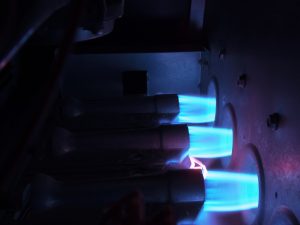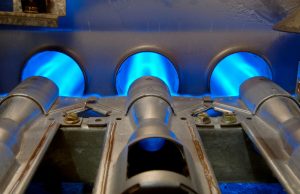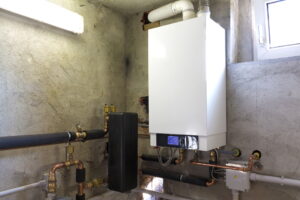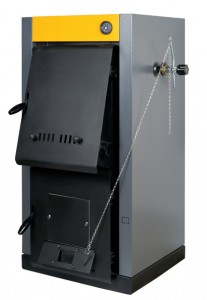 We often remind customers who have natural gas furnaces that these systems aren’t “dangerous.” It’s true that gas furnaces can develop safety hazards, but this is also true of many different home appliances. With the right maintenance for your furnace, as well as calling for prompt furnace repair in Plattsburgh, NY whenever necessary, you can expect your gas furnace to safely serve you and your family for many years.
We often remind customers who have natural gas furnaces that these systems aren’t “dangerous.” It’s true that gas furnaces can develop safety hazards, but this is also true of many different home appliances. With the right maintenance for your furnace, as well as calling for prompt furnace repair in Plattsburgh, NY whenever necessary, you can expect your gas furnace to safely serve you and your family for many years.
To help explain how your furnace operates safely, as well as how to tell when something may be wrong, we’re going to look at several key safety features built into gas furnaces.

 The standing pilot light was the conventional way that natural gas furnaces lit their burners whenever the heating system turned on. They’ve become so identified with home furnaces that people take for granted that pilot lights are still around doing the same job as usual.
The standing pilot light was the conventional way that natural gas furnaces lit their burners whenever the heating system turned on. They’ve become so identified with home furnaces that people take for granted that pilot lights are still around doing the same job as usual. Cold weather and snowy nights may produce images of hot cocoa and a warm fireplace, but frigid nights are anything but pleasant when your furnace isn’t working properly.
Cold weather and snowy nights may produce images of hot cocoa and a warm fireplace, but frigid nights are anything but pleasant when your furnace isn’t working properly. One of the most important facts you need to know about your home’s gas furnace is when to have it replaced. No powerful appliance like a furnace can last forever and, considering our extreme winter weather, it’s amazing most furnaces last for as long as they do. At a certain point, you’ll need to make the choice to stop arranging for
One of the most important facts you need to know about your home’s gas furnace is when to have it replaced. No powerful appliance like a furnace can last forever and, considering our extreme winter weather, it’s amazing most furnaces last for as long as they do. At a certain point, you’ll need to make the choice to stop arranging for  We always recommend that homeowners arrange for heating maintenance during the fall. We’re deep into the fall now—it’s past Halloween—and the temperatures are making their slow and sure drop down to what will eventually be the full cold of winter. So if you haven’t gotten your heating maintenance done yet, right now is a great time to have it done.
We always recommend that homeowners arrange for heating maintenance during the fall. We’re deep into the fall now—it’s past Halloween—and the temperatures are making their slow and sure drop down to what will eventually be the full cold of winter. So if you haven’t gotten your heating maintenance done yet, right now is a great time to have it done. You’ve had the same boiler for many years providing your home with warmth through the winters. In fact, that boiler may have been in place for
You’ve had the same boiler for many years providing your home with warmth through the winters. In fact, that boiler may have been in place for  Once upon a time, the way gas furnaces ignited their burners was with a standing pilot light. You’re probably familiar with at least a few of these older furnace models since they have a long history. A small gas flame stays lit throughout the winter and, when natural gas flows to the burners, this flame is responsible for igniting the jets to start the heating cycle.
Once upon a time, the way gas furnaces ignited their burners was with a standing pilot light. You’re probably familiar with at least a few of these older furnace models since they have a long history. A small gas flame stays lit throughout the winter and, when natural gas flows to the burners, this flame is responsible for igniting the jets to start the heating cycle. You expect the central heating system in your house to run long enough to reach the temperature set on the thermostat.
You expect the central heating system in your house to run long enough to reach the temperature set on the thermostat.  The heat a boiler sends into a house, whether from radiators, baseboard heaters, or in-floor elements, feels wonderful during cold winter days. But what if one morning you wake up to discover that the house isn’t warming up as well as it should? You check the thermostat to make sure the settings are right, and then you might try raising the thermostat setting to make up the difference. But you shouldn’t have to do this: the boiler is supposed to meet the standard household demand for comfort, and pushing up the thermostat to attempt to compensate may lead to more trouble.
The heat a boiler sends into a house, whether from radiators, baseboard heaters, or in-floor elements, feels wonderful during cold winter days. But what if one morning you wake up to discover that the house isn’t warming up as well as it should? You check the thermostat to make sure the settings are right, and then you might try raising the thermostat setting to make up the difference. But you shouldn’t have to do this: the boiler is supposed to meet the standard household demand for comfort, and pushing up the thermostat to attempt to compensate may lead to more trouble. 





